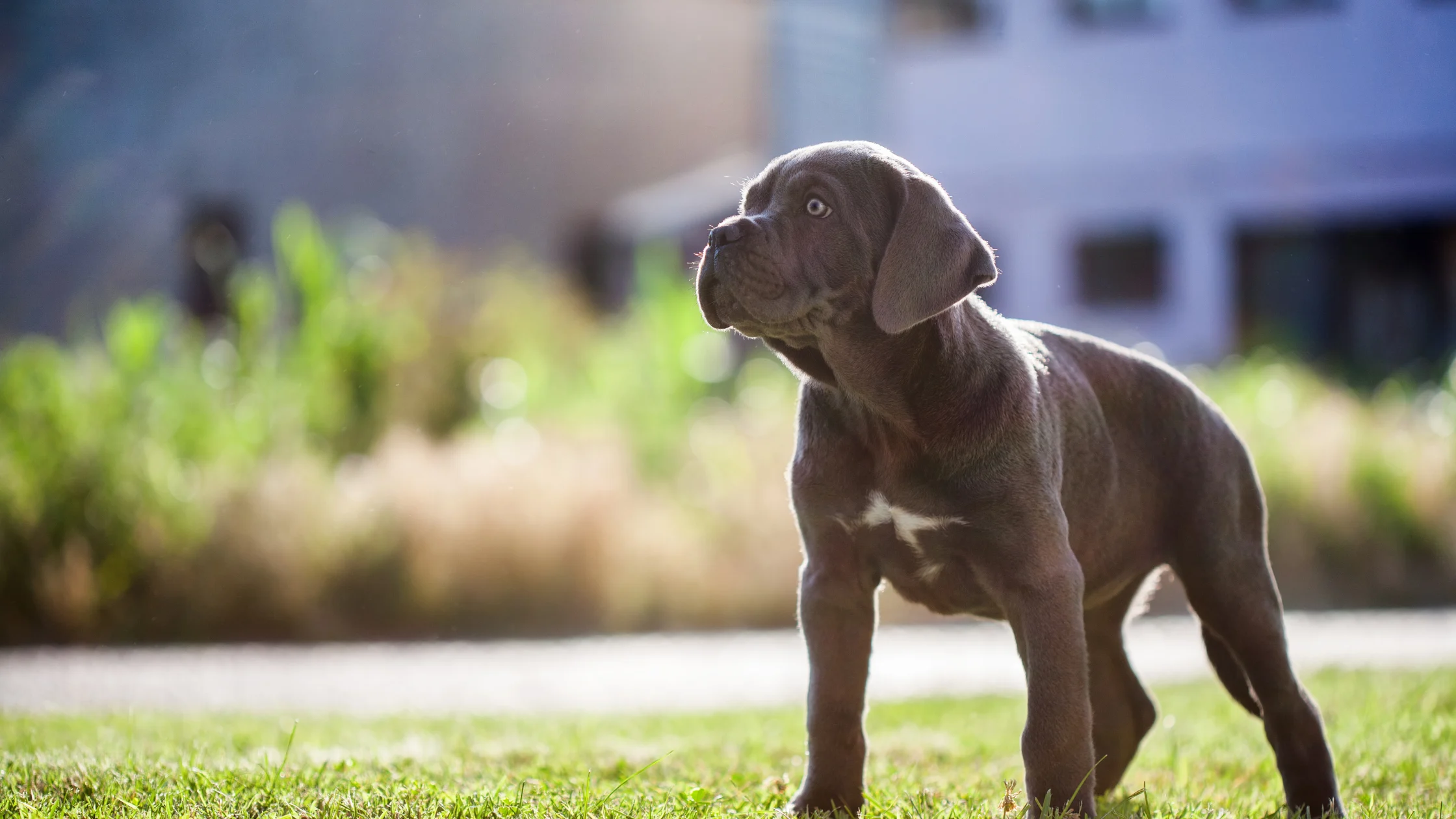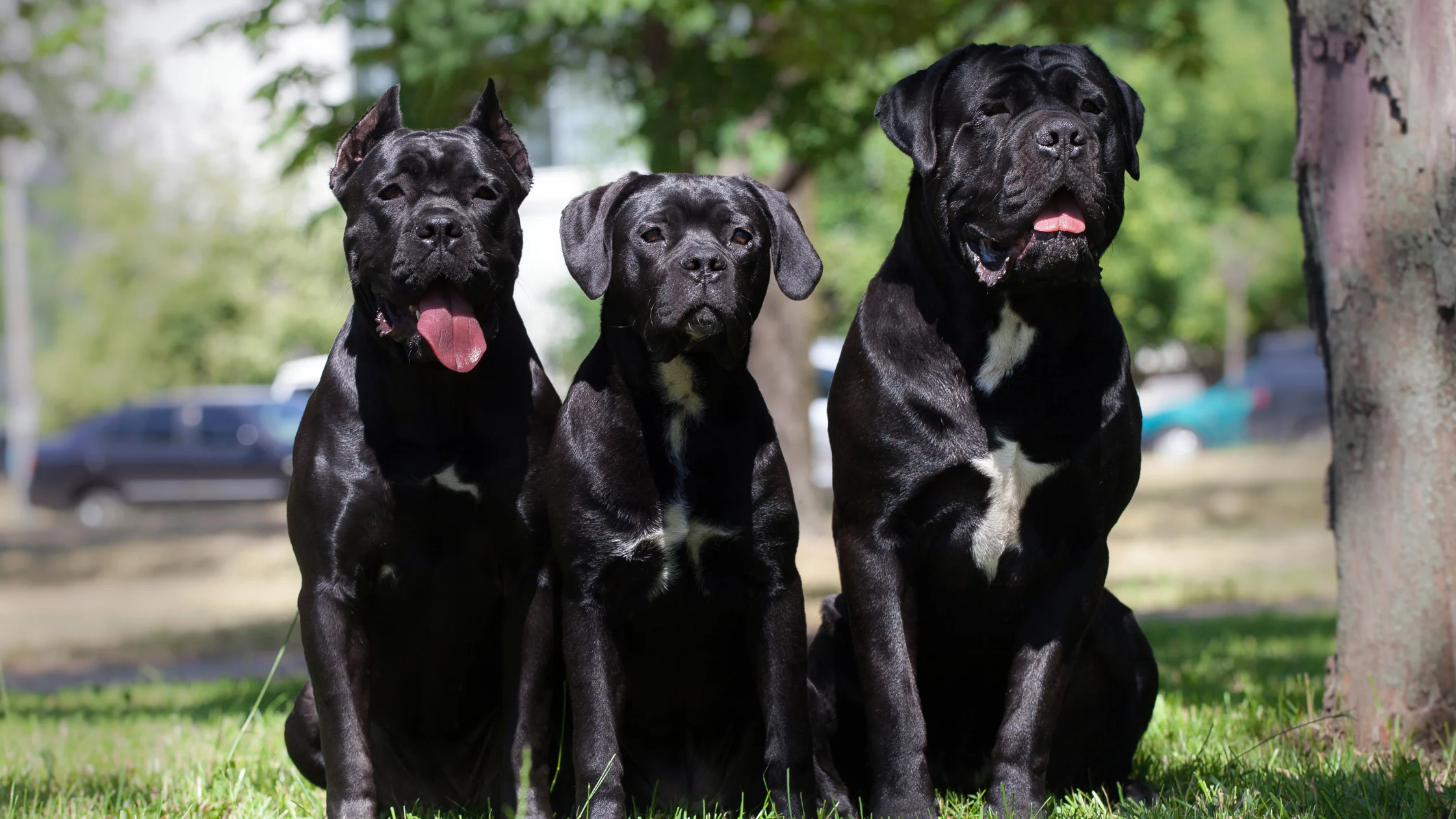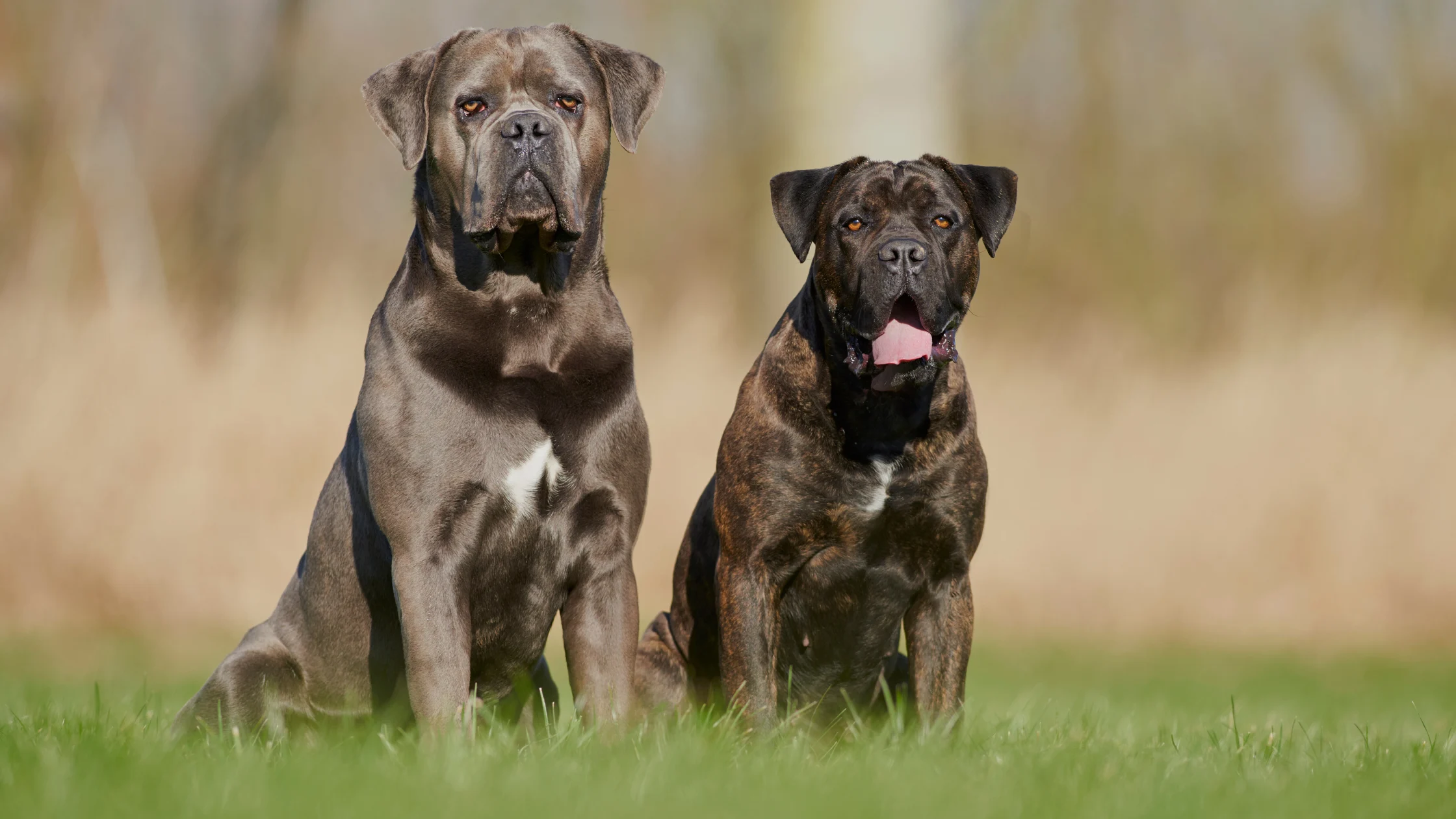Last Updated:
The Cane Corso, a towering figure among mastiff breeds, continues to attract attention for its striking build, protective temperament, and dignified presence. Originally bred in Italy as a working and guarding dog, the Cane Corso has firmly established itself as a loyal family companion, provided it receives proper training and care. One of the most important responsibilities for any Cane Corso owner is understanding the breed’s unique growth timeline, which can span up to two years. With the right knowledge about cane corso size and weight expectations across the different stages of development, owners can ensure their dogs grow into strong, healthy adults.
A Glimpse Into the Cane Corso’s Stature
Cane Corsos are known for their size and weight. Adult males typically stand between 25 and 27.5 inches tall and weigh between 99 and 110 pounds. Females, slightly more compact but still muscular, generally measure 23.5 to 26 inches in height and weigh between 88 and 99 pounds. These impressive numbers, however, aren’t achieved overnight. Cane Corsos undergo a series of growth phases that shape their final form, influenced by factors such as genetics, nutrition, and exercise routines.
Unlike smaller breeds that reach their full size within a year, Cane Corsos mature more slowly. Most reach their full height between 12 and 18 months, but continue to gain muscle mass and bulk until they’re about two years old. During this extended development period, close monitoring and structured care are key to ensuring optimal physical health. Hygiene is important; learn how often to bathe your cane corso.
Cane Corso Size and Weight: The 4 Key Growth Stages of the Cane Corso

1. Birth to 2 Months: A Promising Start
Cane Corso puppies are born small, often weighing between 1.5 and 2.5 pounds. However, in just two months, their weight increases dramatically. Males may reach 18 to 25 pounds, while females grow to 15 to 22 pounds. This early stage of development is critical. Puppies are dependent on their mother’s milk for the first few weeks, but they begin transitioning to solid food by the time they are 6 to 8 weeks old.
This is a crucial time to introduce nutrient-rich puppy food that supports bone and muscle growth. Because their bones are rapidly developing, it is essential to ensure that they receive adequate calcium and protein. Puppies in this phase are also highly energetic and begin socialising with their littermates—an essential step in their behavioural development.
2. 2 to 6 Months: The Rapid Growth Phase
Between two and six months, Cane Corsos experience one of their most accelerated periods of growth. Males can reach weights between 25 and 65 pounds, while females may weigh between 20 and 55 pounds. During this time, you’ll notice dramatic changes not only in size but also in posture and muscle tone.
Owners must pay close attention to nutrition and feeding schedules during this period. A high-quality puppy formula rich in protein, fats, and essential minerals can support their increasing activity levels and muscle development. Overfeeding or an unbalanced diet can lead to too-rapid growth, which places pressure on developing joints and can result in lifelong issues such as hip dysplasia.
Daily exercise should include short walks and basic obedience training, but strenuous running or jumping should be avoided until their joints are more stable.
3. 6 to 12 Months: Adolescent Refinement
By the time Cane Corsos reach six months of age, they enter a transitional stage between puppyhood and adulthood. Males generally weigh between 55 and 85 pounds, while females weigh between 45 and 75 pounds. Their skeletal structure becomes more defined, and they begin to resemble miniature adults, though with slightly gangly limbs and awkward movements.
Nutritional needs shift slightly at this point, and some owners begin the gradual transition to adult dog food, particularly formulas designed for large breeds. It’s important not to rush this switch, as their growing bodies still require the high-calorie content and nutrients found in puppy food. Moderate, low-impact exercise is still ideal during this phase.
Owners will also see the development of protective and territorial instincts typical of the breed. This is the right time to reinforce positive behaviour, socialisation, and consistent training routines.
4. 12 to 24 Months: Reaching Full Maturity
By their first birthday, most Cane Corsos have reached their full height, although they continue to develop in muscle mass and weight well into their second year. Males now weigh between 90 and 120 pounds and stand up to 27.5 inches tall. Females typically weigh between 85 and 105 pounds and may stand up to 26 inches tall.
At this stage, their energy levels may stabilise, and their training foundation becomes especially important. A healthy adult Cane Corso requires a diet formulated for active large breeds, ensuring that protein intake supports muscle maintenance without promoting excess fat gain. Overweight Cane Corsos are at risk of joint stress, cardiovascular strain, and reduced lifespan.
Balanced workouts that combine cardio and strength-building activities—such as brisk walks, agility tasks, or resistance exercises—help maintain both their physique and mental well-being.
What Influences a Cane Corso’s Size and Growth?
No two Cane Corsos are identical, and several underlying factors determine how large or muscular they become. While general breed standards provide a baseline, genetics, diet, exercise, and health conditions all play a vital role.
Genetics is perhaps the most dominant factor. The size and stature of the parents often provide a reliable indication of a puppy’s future development. If the parents were particularly large or well-muscled, chances are the offspring will follow suit.

Nutrition must be carefully managed throughout all stages of development. Puppies need specially formulated diets with high protein and controlled calcium and phosphorus levels to avoid growth disorders. As they mature, their diets should adapt to reflect their energy expenditure and activity levels.
Exercise should be appropriate to their stage of development. While Cane Corsos are naturally athletic, overexertion in the early months can lead to skeletal injuries. Instead, controlled play and leash training can build a healthy habit of activity without damaging their joints.
Health conditions such as thyroid disorders, hip dysplasia, or parasitic infections can impair growth and weight gain. Regular veterinary check-ups and preventive care play a crucial role in detecting issues early and maintaining growth on track.
Conclusion: Guiding Your Cane Corso to Healthy Adulthood
Raising a Cane Corso is both a privilege and a responsibility. Understanding their growth timeline from birth to two years provides invaluable insight into what to expect and how best to support them. The key to raising a healthy Cane Corso lies in a combination of balanced nutrition, consistent yet gentle exercise, responsible training, and attentive healthcare.
While their transformation from tiny puppy to muscular adult is remarkable, it’s not just about Cane Corso size and weight. It’s about fostering the strength, temperament, and health that define this noble breed. Whether you’re a first-time Cane Corso owner or an experienced enthusiast, tracking size and weight milestones ensures that your companion matures into the loyal, protective guardian they were born to be.

